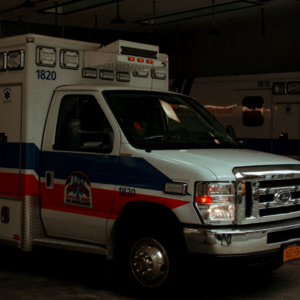Visitor v. Hospital
Supreme Court, Bronx County
The plaintiff, a 20-year-old-man, was standing by the ambulance bay next to the front door of the emergency room, awaiting the return of his girlfriend who had gone inside to seek medical attention. He was approached from across the street by the girlfriend’s former romantic partner, a considerably larger man with whom he had exchanged words over social media. The two first got into a heated discussion or argument, and then a physical fight, all captured by closed-circuit surveillance cameras in the ambulance bay and ER entrance. The larger man was later arrested by NYPD and prosecuted by the Bronx DA’s office, pleading guilty to a crime arising from the altercation. The plaintiff then sued the hospital, demanding $1.6 million in damages for the fractured nose and facial bones, and alleged eye damage, sustained in the fight. He claimed that hospital security guards had been positioned no more than a few yards away from the prolonged verbal exchange before the fisticuffs began, and must have overheard it, but negligently failed to take any action to protect him from the other man. He further alleged that the injuries he sustained occurred only after a one-minute break in the fight during which the guards had finally come between the combatants and appeared to have taken control of the situation. He argued that he had reasonably relied upon the guards’ protection, and that the other man’s opportunity to charge and strike him at least twice in the face after the cessation of the initial fighting demonstrated the guards’ negligence. We countered that the plaintiff had spotted his approaching challenger from across the street, but had not retreated inside the hospital or otherwise sought to avoid the conflict. He had never called out or otherwise sought assistance from the guards or anyone else, and—as the camera footage revealed—had thrown the first punch, striking the other man squarely in the jaw. On our motion for summary judgment, the Court agreed that the plaintiff, as a willing participant in the fight, effectively waived any right he might otherwise have had to obtain damages from the hospital for injuries wrought by a non-party to the suit. The action was dismissed. The plaintiff then appealed, arguing that the lower court had failed to recognize that there had been two separate fights—one before and one after the one-minute pause in physical combat—and that the security guards had led the plaintiff to rely upon their protection during and after that pause. We defended the appeal. The First Department affirmed the dismissal, finding no reason to re-characterize the legal relationships or duties as between the plaintiff and the hospital at any point in the timeline of events.




